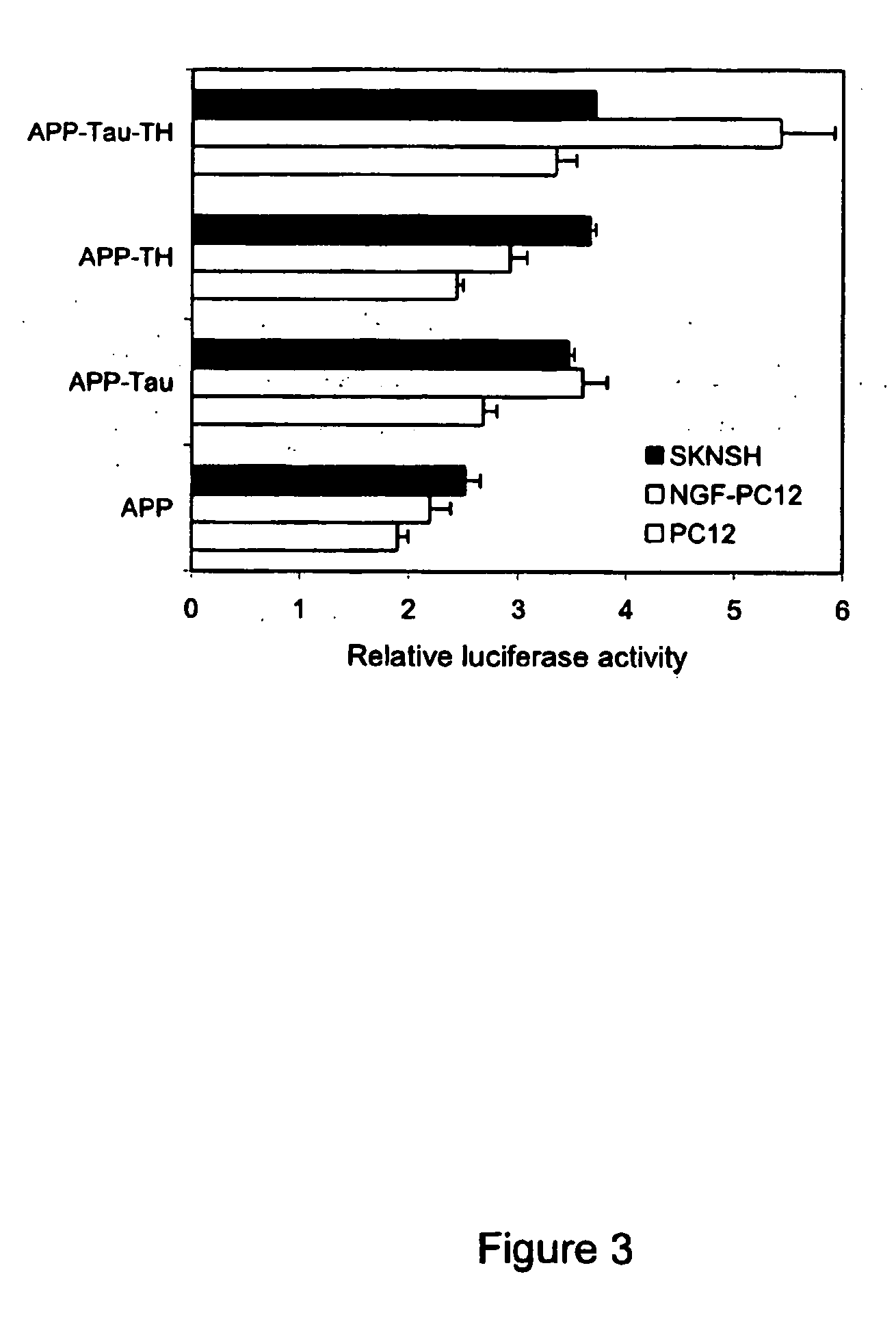Optimization of transgene expression in mammalian cells
a technology of mammalian cells and transgenes, applied in the direction of dna/rna fragmentation, viruses, fungi, etc., can solve the problems of hindering the use of elements and not being tested in plasmid or viral vectors, so as to enhance the capacity of vector delivery systems, enhance transgene expression, and increase expression
- Summary
- Abstract
- Description
- Claims
- Application Information
AI Technical Summary
Benefits of technology
Problems solved by technology
Method used
Image
Examples
Embodiment Construction
[0016] The present invention is directed to genetic constructs and vectors suitable for efficient and improved transgene delivery and expression into mammalian cells, particularly into neural cells, typically of human origin. As indicated above, the invention is based, inter alia, on the use of particular combinations of regulatory elements which allow an optimized gene expression into human cells. The present invention thus describes the use of particularly advantageous posttranscriptional regulatory elements which, when operably combined and linked to a transgene, allow high-level transgene expression in cells. The applicants have indeed found that transgene expression in cells of various phenotypes, including neuronal cells (PC12, NGF-treated PC12, SKNSH for example), glial cells (C6, U-87MG for example) and other cellular types such as fibroblats, was substantially enhanced by combinations of appropriate posttranscriptional regulatory elements.
[0017] The present invention is th...
PUM
| Property | Measurement | Unit |
|---|---|---|
| Angle | aaaaa | aaaaa |
| Angle | aaaaa | aaaaa |
| Composition | aaaaa | aaaaa |
Abstract
Description
Claims
Application Information
 Login to View More
Login to View More - R&D
- Intellectual Property
- Life Sciences
- Materials
- Tech Scout
- Unparalleled Data Quality
- Higher Quality Content
- 60% Fewer Hallucinations
Browse by: Latest US Patents, China's latest patents, Technical Efficacy Thesaurus, Application Domain, Technology Topic, Popular Technical Reports.
© 2025 PatSnap. All rights reserved.Legal|Privacy policy|Modern Slavery Act Transparency Statement|Sitemap|About US| Contact US: help@patsnap.com



